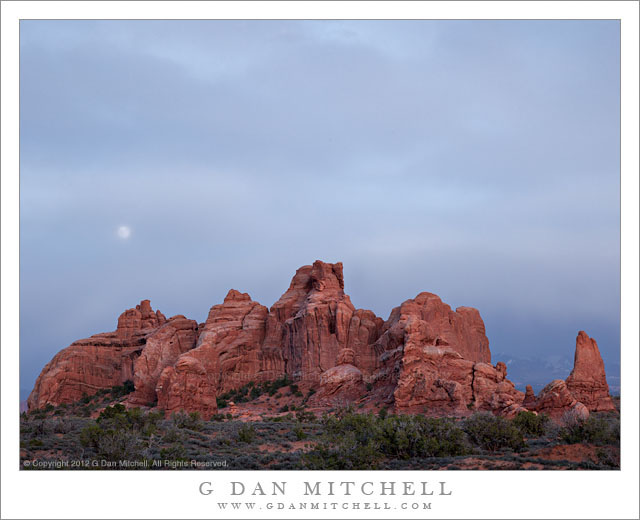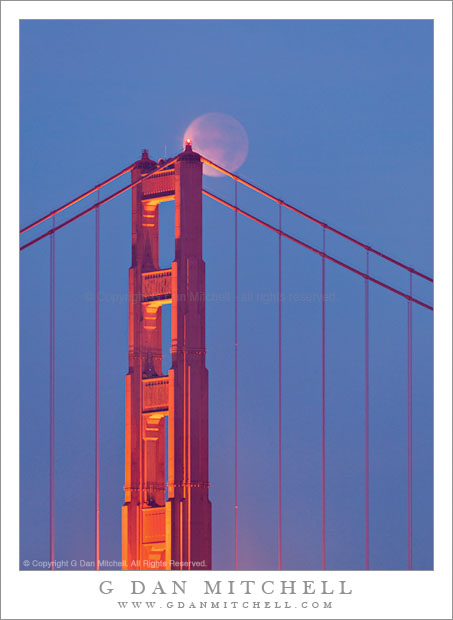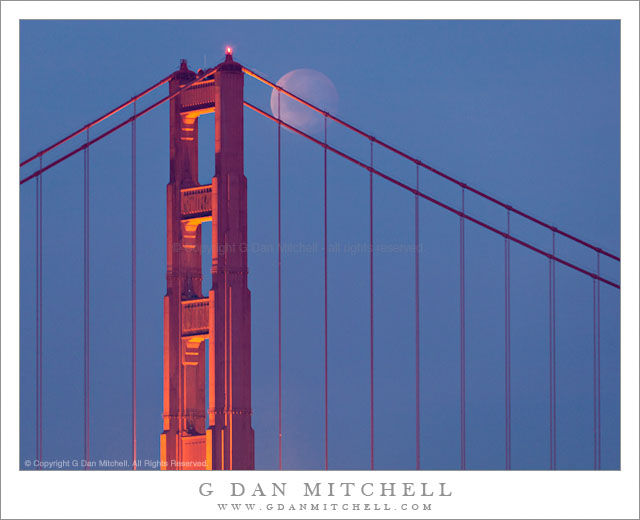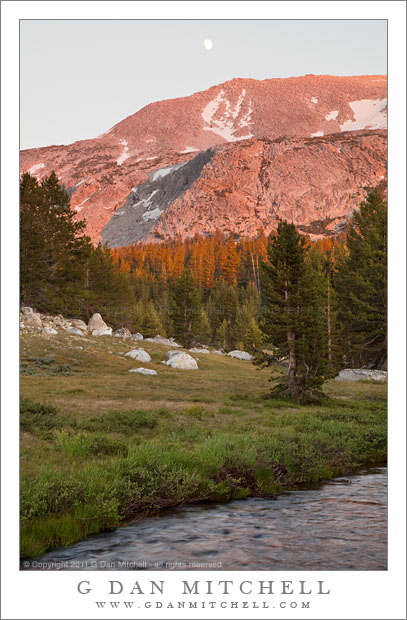Moonrise, Clouds, and Sandstone Towers. Arches National Park, Utah. April 5, 2012. © Copyright 2012 G Dan Mitchell – all rights reserved.
The full moon rises through thin clouds above sandstone towers, Arches National Park.
This was a very challenging evening for photography, but I’m happy with some of the results nonetheless. We had gone into Arches National Park and made it to the first big group of arches and other formations not far from what I recall was identified as Balancing Rock. Not far from here there is an impressive amphitheater of red rock sandstone, and all through this area a truly astonishing number of arches of various forms and sizes may be found. Since it was late in the day, we figured we would stake out our ground for golden hour and dusk shots right around here.
However, there were a few challenges. First, we were arriving at this spot for the very first time, with no previous research, and it was basically time to start shooting right about now! There was little to no time for scouting, so I headed up a trail towards a likely looking area of sandstone to see what I could find as the sunset approached. I soon discovered a second issue, or perhaps realized that an issue I had known about was going to be more challenging than I had hoped – it was very windy! As the light dims this becomes more of a problem as exposures necessarily lengthen. At some point, there is virtually no tripod that is steady enough, even when weighted, to hold a camera and lens rock steady in a near gale. I have some tricks up my sleeve though, and eventually I searched out some camera positions that were sheltered by rock towers and walls. By this time, the sun had dropped below the horizon and I was now shooting it twilight, which can provide some of the most beautiful light of the day when the right sort of “glow” occurs. It turned out that the full moon was just rising, though not over the main, iconic formations. There is usually a narrow window of exposure opportunity for photographing the moon. The moon is hard to shoot effectively in full daylight, but after dark it is far too bright for the ambient light – so one ideal is to shoot it in this time right around dusk when there is just the right balance of moon light and ambient light. Lucky for me, high thin clouds moved across the sky to the east and moderated the brightness of the full moon, allowing me to continue shooting in darker conditions so that I could make this exposure of the moon rising above nearby sandstone formations.
G Dan Mitchell is a California photographer whose subjects include the Pacific coast, redwood forests, central California oak/grasslands, the Sierra Nevada, California deserts, urban landscapes, night photography, and more.
Blog | About | Flickr | Twitter | Facebook | Google+ | 500px.com | LinkedIn | Email
Text, photographs, and other media are © Copyright G Dan Mitchell (or others when indicated) and are not in the public domain and may not be used on websites, blogs, or in other media without advance permission from G Dan Mitchell.





